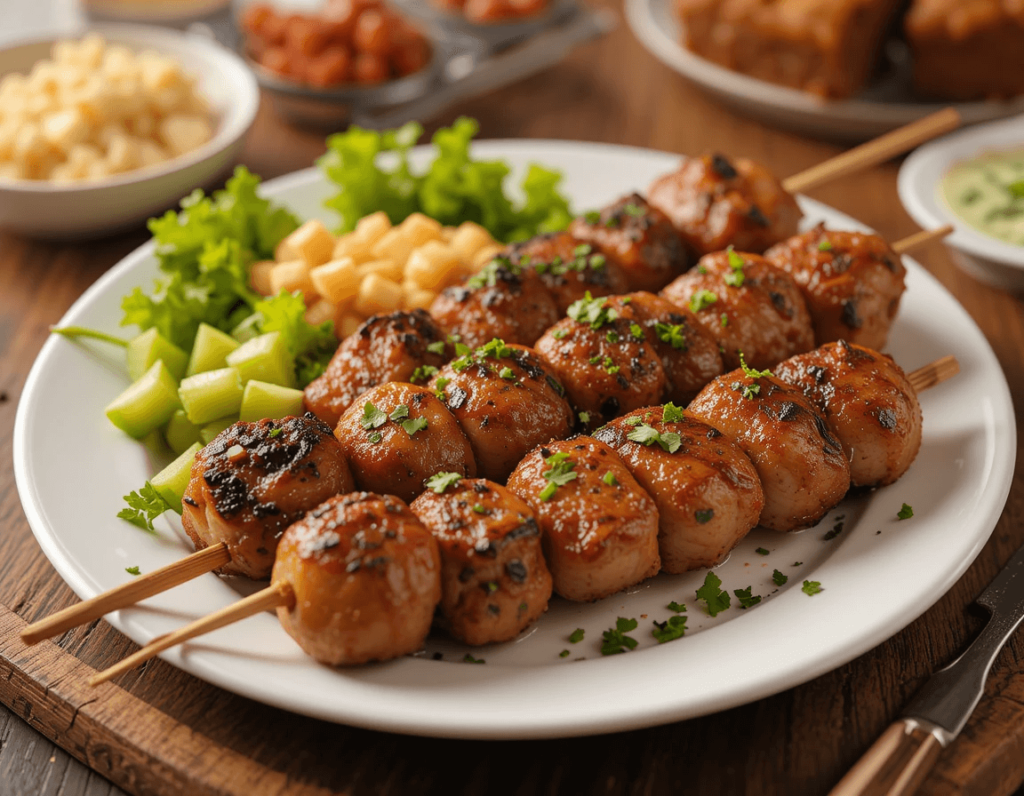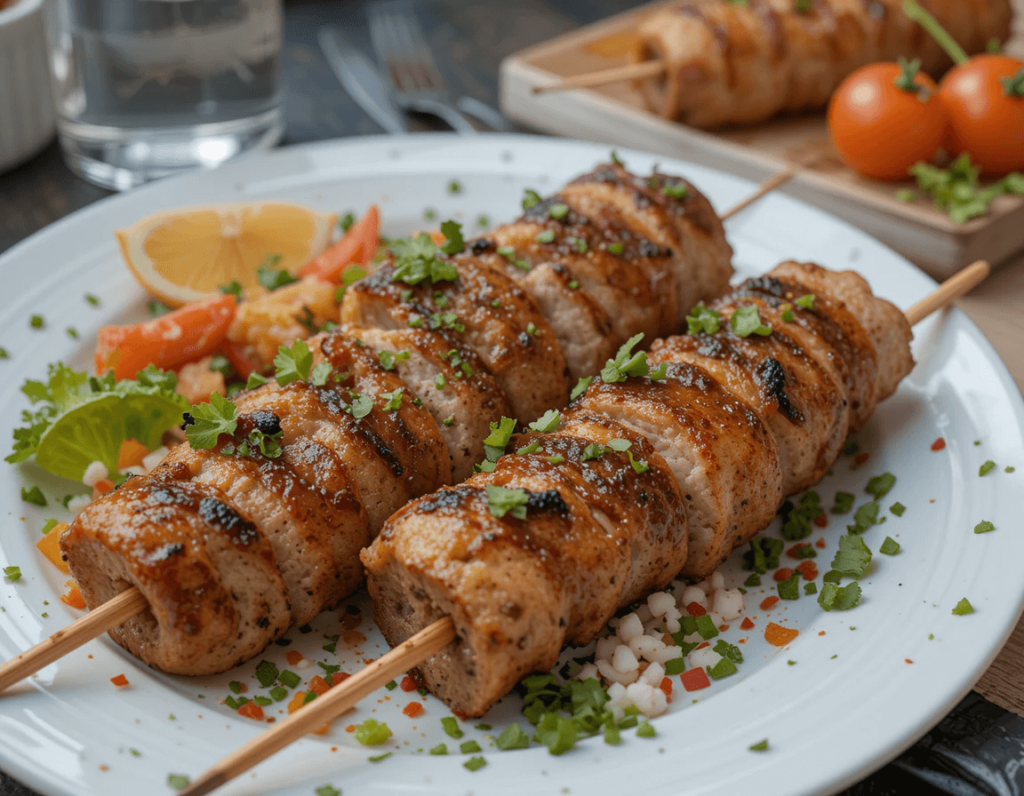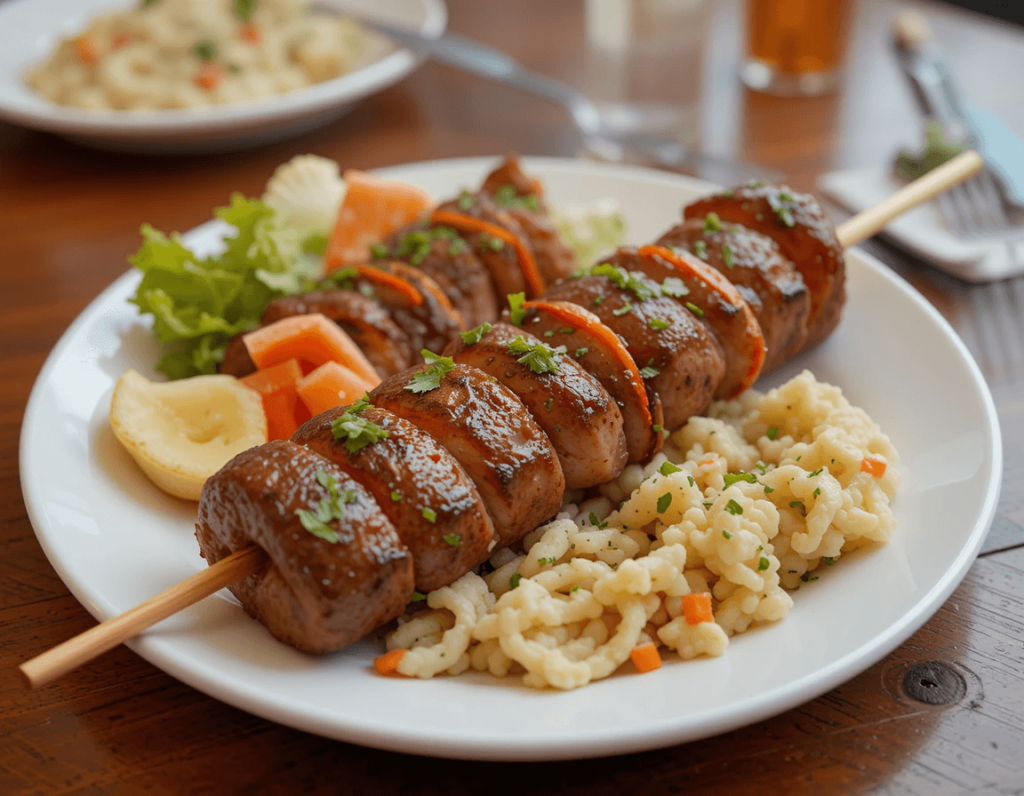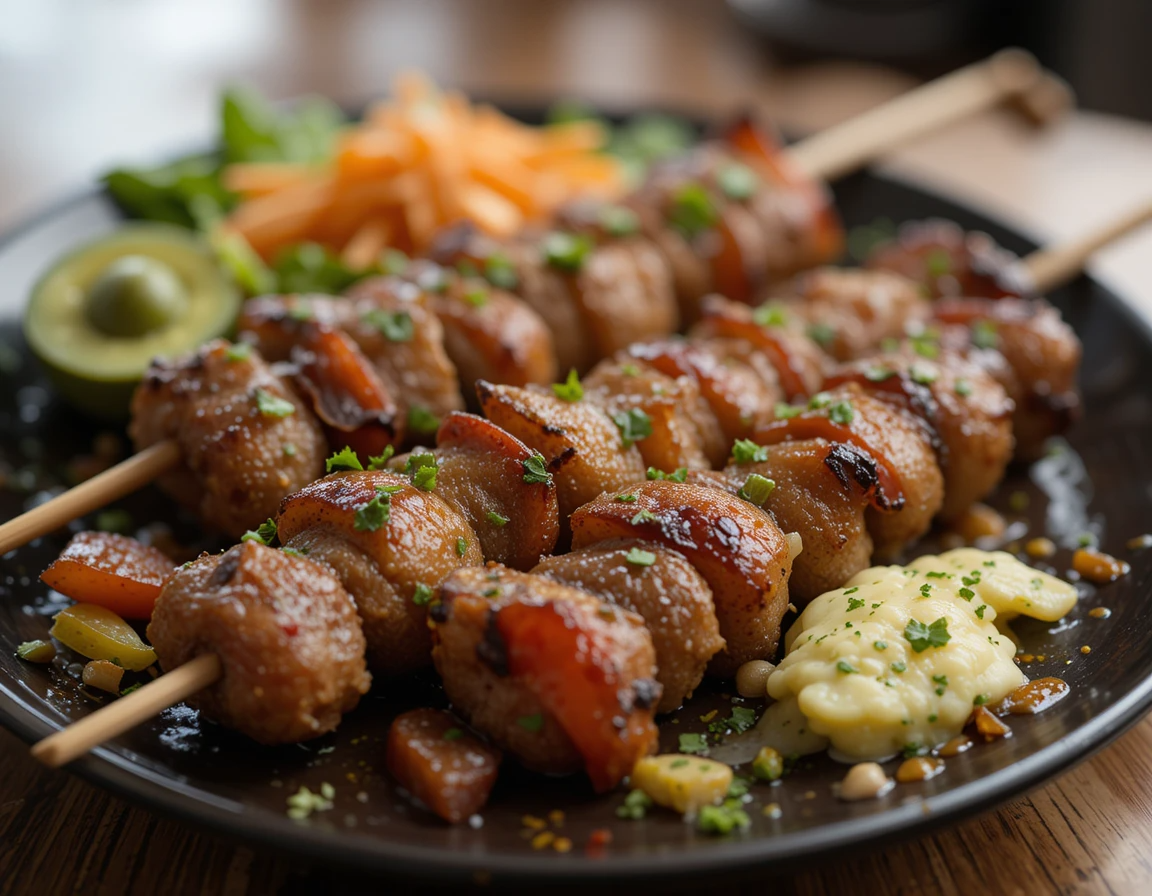The story of Authentic Adana Kebab begins in the fertile plains of southern Turkey, where skilled butchers first crafted this distinctive dish. The rich culinary heritage of Adana, a city famous for its exceptional meat preparation techniques, gave birth to what we now know as the Adana Kebab recipe—a flavorful, spicy, and perfectly grilled Turkish classic.
The History and Origins of Adana Kebab

I find the origins of Adana kebab deeply rooted in the traditions of the Turkmen tribes who settled in the Adana region. These nomadic people brought with them sophisticated meat preservation and cooking methods. Furthermore, their expertise in spice blending and meat preparation laid the foundation for what would become one of Turkey’s most celebrated dishes.
Adana’s Culinary Legacy
Meanwhile, the city of Adana emerged as a culinary powerhouse, primarily due to its strategic location along ancient trade routes. The local butchers, known as kasaps, developed specific techniques for preparing lamb meat. Consequently, these methods became closely guarded secrets passed down through generations of kebab masters.
The Evolution of Adana Kebab
The basic preparation of Adana kebab has remained remarkably consistent through centuries. Nevertheless, each kebab master adds their personal touch while maintaining the core traditional elements. The dedication to preserving these age-old techniques speaks volumes about the respect Turkish chefs have for this culinary art form.
Cultural Significance of Adana Kebab
The role of Adana kebab extends far beyond mere sustenance in Turkish culture. This iconic dish represents:
- A centerpiece of family celebrations and gatherings
- An essential element of Turkish street food culture
- A symbol of Adana’s culinary expertise and pride
- A traditional craft passed down through generations
The preparation of Adana kebab involves more than following a recipe – it’s about understanding the subtle nuances that come from years of experience. Additionally, the dish serves as a bridge between ancient Turkish traditions and modern culinary practices.
The significance of Adana kebab in Turkish culture cannot be overstated. For instance, local kebab masters take immense pride in their craft, often spending years perfecting their technique before earning the title of usta (master). Moreover, the preparation process itself is considered an art form, with each step requiring precise attention to detail and timing.
What Makes Adana Kebab Different from Other Kebab Variants?

“Kebabs are usually made out of ground lamb meat and tail fat, though there are many regional variations. Kebabs are fairly common in the area from Mersin in Turkey to Kirkuk in Iraq, and includes Aleppo in Syria.” — Wikipedia, Online Encyclopedia
Authentic Adana kebab stands distinct among Turkish kebab varieties, primarily because of its protected regional status and specific preparation requirements.
Adana vs. Urfa Kebab: A Tale of Two Flavors
Although Adana and Urfa kebabs share similar preparation methods, their spice profiles set them distinctly apart. Specifically, Adana kebab features a spicier blend with red pepper flakes, while Urfa kebab employs milder spices like paprika, oregano, and cumin. The meat mixture for both variants requires careful attention to fat content and preparation techniques.
Unique Ingredients in Adana Kebab
The authenticity of Adana kebab Secrets lies in its precise ingredient selection. The meat must come from male lambs under one year old, raised in their natural environment. The preparation demands:
- Hand-minced meat using a crescent-shaped cleaver (zırh)
- 20% fat content for optimal texture
- Careful removal of silverskin and nerves
- A 5:1 ratio of meat to tail fat
Skewer Techniques: The Art of Assembly
The skewering process requires specific expertise and equipment. Flat, wide metal skewers prove essential for proper meat adhesion. Turkish chefs spend years mastering the technique of creating thin, wavy surfaces on their kebabs.
When assembling the kebab, chefs work swiftly but precisely. The meat mixture must be kneaded until it becomes sticky enough to cling to the skewer. Subsequently, they create indentations along the meat’s surface using their thumbs, ensuring even cooking.
The cooking process itself differs from other kebab varieties. Traditional preparation involves placing the skewers over smoldering coals without a grill grate. This method allows the fat to drip directly onto the coals, creating the signature smoky flavor that distinguishes Adana kebab from its counterparts.
The preparation demands meticulous attention to moisture levels. Indeed, excess liquid can cause the meat to fall off the skewer. Essentially, achieving the perfect Adana kebab requires balancing multiple factors – from meat temperature to handling technique.
Notably, the authentic version calls for a specific knife called Zırh Bıçağı, featuring a long, narrow blade with a curved edge. This tool enables the fine mincing that gives Adana kebab its characteristic texture, setting it apart from machine-ground meat versions.
Essential Ingredients and Spices for the Perfect Adana Kebab

Creating the perfect Adana kebab requires mastering a precise blend of ingredients and spices, each playing a crucial role in the final flavor profile.
The Role of Sumac and Red Pepper Paste
Sumac stands as an irreplaceable ingredient in authentic Adana kebab, providing a distinctive tart, lemony flavor that cannot be substituted with any other ingredient. First, the red pepper paste (biber salçası) adds a unique salty-sweet brightness that forms the backbone of the kebab’s flavor profile.
The spice combination remains intentionally minimal to showcase the meat’s natural flavors. Primarily, Turkish chile flakes provide an aromatic heat without overwhelming the palate. The combination of these spices creates a harmonious blend that defines the authentic taste of Adana kebab.
Choosing the Right Meat
The foundation of exceptional Adana kebab lies in selecting proper meat with specific characteristics. A fat content of approximately 20% proves essential for maintaining moisture and flavor. As opposed to using just one type of meat, many chefs prefer a blend of 50% lamb and 50% beef for optimal taste.
The meat preparation process involves several critical steps:
- Single grinding of high-quality meat
- Careful removal of silverskin and nerves
- Proper fat distribution throughout the mixture
- Thorough straining to remove excess moisture
Marinade Secrets
The secret to perfect Adana kebab lies not in a traditional marinade, but rather in the precise mixing technique. Salt plays a fundamental role, particularly at 1.5% by weight, as it dissolves the muscle protein myosin. This protein dissolution leads to cross-linking during mixing, creating a network that retains juices during cooking.
The mixing process requires careful attention to temperature control. Adding ice-cold water helps maintain the proper temperature and prevents fat from leaking out. The mixture achieves the right consistency once it begins coating the sides of the bowl.
The preparation demands meticulous attention to moisture levels. Particularly, excess liquid must be removed to prevent the meat from falling off the skewer during cooking. The onion, though adding essential flavor, needs proper straining to remove excess moisture that could compromise the kebab’s structure.
Cooking Methods: How Turkish Chefs Grill Adana Kebab
Mastering the art of grilling Adana kebab requires precise techniques passed down through generations of Turkish chefs. The traditional cooking method relies on charcoal grilling, which imparts a distinctive smoky flavor to the meat.
Grilling Techniques: The importance of an open grill
Initially, Turkish chefs prepare a bed of smoldering oak wood coals without flames. The traditional setup involves placing skewers directly over the coals without a grill grate. Properly positioned skewers rest on supports at either end, allowing the meat to cook evenly while collecting dripping fat.
For home cooking, chefs recommend these essential steps:
- Preheat the grill to medium-high heat
- Position kebabs for indirect cooking to prevent flare-ups
- Turn skewers frequently for even browning
- Cook until the meat develops a dark brown crust
Meat Skewer Methods
The success of Adana kebab primarily depends on proper meat attachment to the skewer. Accordingly, chefs use wide, flat skewers that can hold between 6.5 to 9.5 ounces of meat mixture. The meat must be worked quickly yet carefully around the skewer, creating a thin, even layer.
Working with cold meat proves crucial, as it helps maintain the proper texture and prevents the mixture from falling apart. Generally, moistening hands with water makes the process more manageable and helps achieve better adhesion.
Cooking Temperatures
The cooking process requires careful temperature management to achieve the perfect balance between exterior char and interior moisture. The kebabs typically need about 12 minutes of total cooking time. As they cook, chefs sprinkle them with a mixture of salt, cumin, and sumac to enhance flavor.
Temperature monitoring remains essential throughout the cooking process:
- Internal temperature should reach 160°F (71°C)
- Maintain medium-high heat throughout cooking
- Allow even heat distribution by turning regularly
A unique aspect of traditional preparation involves pressing flatbread against the cooking meat to collect melting fat. This technique simultaneously warms the bread and infuses it with rich kebab flavors.
The cooking method offers some flexibility, as the kebabs prove quite forgiving to cook. Since they lack a casing and maintain a relatively flat shape, achieving the proper doneness before the exterior burns rarely poses a challenge. Similarly, the high-fat content and proper salt levels help maintain moisture throughout the cooking process.
The Secrets Turkish Chefs Keep to Themselves
Behind every perfect Adana kebab lies a collection of closely guarded secrets, passed down through generations of Turkish chefs. These culinary masters protect their techniques with unwavering dedication, ensuring the authenticity of this beloved dish.
Why the Secrets are Guarded: Exploring the mystique behind the chef’s refusal to share the full recipe
First, Turkish chefs spend decades perfecting their craft, learning intricate details that no recipe can fully capture. The preparation involves a meticulous process where the meat is finely minced using a specialized knife called Zırh Bıçağı. This traditional tool, featuring a long, narrow blade with a curved edge, creates a texture distinctly different from machine-processed meat.
Second, the most closely guarded secret involves the use of sheep tail fat, known as “kuyruk yağ”. This specific ingredient, not available from every breed of lamb, contributes significantly to the kebab’s tenderness and unique flavor profile. Hence, chefs carefully protect their sources and the precise ratios they use.
How to Replicate the Magic at Home: Insider tips and tricks for achieving an authentic Adana Kebab at home
To create authentic Adana kebab at home, understanding these fundamental principles proves essential:
- Fat content must reach approximately 20% for optimal results
- Salt content should be 1.5% by weight to achieve proper protein binding
- The meat mixture requires thorough kneading until it becomes sticky and coats the bowl
- Ice-cold water addition helps maintain proper temperature during mixing
The mixing process demands particular attention. The meat mixture should become increasingly sticky until it leaves a thin layer on the bowl’s sides. Afterward, adding ice-cold water helps maintain the proper temperature, preventing fat from leaking during cooking.
Common Mistakes to Avoid: What you might be doing wrong when preparing Adana Kebab
Understanding common pitfalls helps achieve better results. The most frequent errors include:
Working with warm meat makes the mixture difficult to handle. Certainly, maintaining cold temperature throughout preparation proves crucial for proper texture and adherence to skewers.
Regardless of the cooking method, proper ventilation remains essential, as the high-fat content creates significant smoke. Otherwise, indoor preparation can become problematic.
The adaptation of recipes to healthier versions ultimately fails to capture the essence of authentic Adana kebab. The dish’s character relies heavily on its fat content and traditional preparation methods.
Liquid content poses another critical challenge. Excess moisture causes the meat to fall from skewers. Therefore, chefs must strain chopped peppers thoroughly using cheesecloth or kitchen towels before incorporation.
For those without access to traditional charcoal grills, alternatives exist. However, gas grills rarely achieve the same smoky flavor. A very hot grill pan can serve as an acceptable substitute, though it won’t replicate the authentic taste completely.
The skewering process requires swift yet careful execution. Working too slowly allows the meat to warm, while rushing risks compromising the kebab’s structure. Practice and patience lead to improvement in this crucial skill.
Overall, achieving authentic Adana kebab results requires respecting traditional methods while understanding the science behind them. The combination of proper ingredients, technique, and attention to detail transforms simple components into an extraordinary culinary experience.
So, what is Adana meat? It refers to minced lamb, traditionally seasoned with red pepper flakes and spices for a bold, smoky flavor. But what is Adana Kebab made of? This famous Turkish dish consists of spiced minced lamb, expertly shaped onto skewers and grilled over charcoal for a juicy, flavorful bite.
Now, what is the difference between Kefta and Adana? While both are minced meat kebabs, Kefta is often a mix of beef and lamb, with more herbs and a milder spice level, whereas Adana Kebab is known for its rich, spicy taste.
Finally, how do you say kebab in Turkish? The word is “kebap,” highlighting Turkey’s deep-rooted grilling traditions. No matter which variation you prefer, Turkish kebabs offer a delicious experience packed with authentic flavors!
